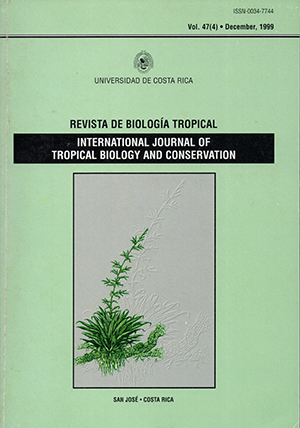Abstract
Cichlasoma istlanum (lordan & Snyder, 1900) is a freshwater cichlid from the Balsas river province in the Pacific Basin. Two subspecies: C. istlana istlana, from lhe Ixtla river in ¡he state of Morelos, Mexico, and C. istlana fusca, from the Huámito river near the town of La Huacana, in the state of Michoacán, were named half a century ago on the basis of merisüe characters. In this work, the karyotype of the species was eslablished by conventional and G-banding cytogenetic procedures and a comparative analysis of karyotypes from the two populations, previously proposed as subspecies, was performed. Ten females were collected in the Amacuzac river, and nine specimens (two females), were eollected in the Huámito river. Based on the eount of 264 mitotie fields of the former and 203 of the latter, the modal number of 2n=48 was established in every sample and considered as ¡he diploid number of both populations. The karyotype analysis was based on ten karyotypes prepared from Morelos and eight from Michoacán, which included ¡hree from females and five from males. The chromosome formula thus established was of 8sm+40stt. The G-banding pattem was similar in both populations and the comparison of the mean Jengths of lhe chromosome pairs did not reveal statistically significant differences between both populations. The presence of a practically identical karyotype does not support the subspecific division. The morphometric analyses made by other authors, which detected overlappíng in the characters that were proposed as distinctive of the two subspecies, agree with the results of this study: not enough divergence has been found lo substantiate ¡he $ubdivision of C. istlanum. The lack of population divergence might have been brought about by an abated geographic isolation caused by gene flow among contiguous populations along their continuous distribution in the Balsas Basin regions, by the relatively small divergence time since their distribution in these regions, andlor, less probably, by a recent historie al replacement of one popuiation by the other. The absence of karyotype differences might also be attributed lo characteristics inherent to the genome organization in the genus Cichlasoma still to be identified and understood.##plugins.facebook.comentarios##

This work is licensed under a Creative Commons Attribution 4.0 International License.
Copyright (c) 1999 Revista de Biología Tropical
Downloads
Download data is not yet available.






